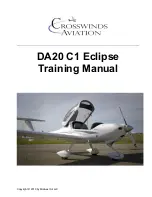Reviews:
No comments
Related manuals for BLANIK L-13

DIAMONDcross 125 HG
Brand: CHARLY Pages: 40

FOIL WING 2020
Brand: DUOTONE Pages: 23

Magpie AP
Brand: Mountain Models Pages: 19

S6-RT
Brand: STEMME Pages: 236

Speedster 2
Brand: Ozone Pages: 20

Metroliner III SA227-BC
Brand: RAZBAM Pages: 93

ZULU
Brand: ZupAir Pages: 9

NEMESIS
Brand: Seagull Models Pages: 37

X-Light F 23
Brand: Fresh Breeze Pages: 34

DA20 C1 Eclipse
Brand: Crosswinds Aviation Pages: 35

FOX
Brand: Apollo Pages: 39

SPEEDUP
Brand: ICARO paragliders Pages: 17

















